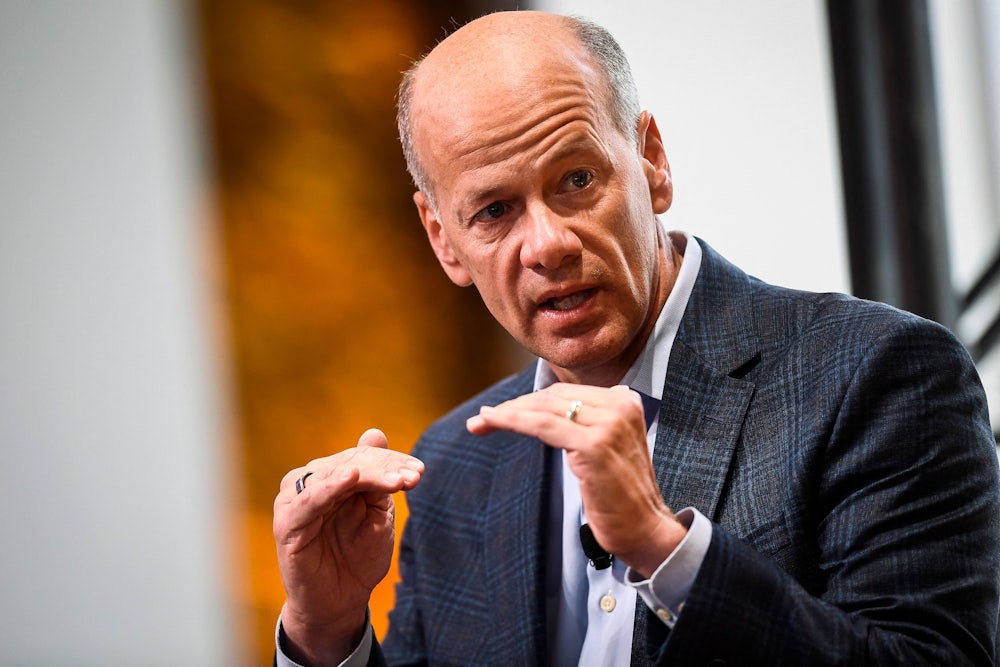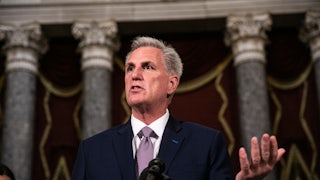After Silicon Valley Bank and Signature Bank went bust in March, liberals and conservatives argued over the cause. Liberals blamed a 2018 law that weakened oversight of midsize banks under the 2010 Dodd-Frank financial reform law, and also an ill-considered 2019 regulation by the Federal Reserve Board that weakened oversight still further. Conservatives blamed incompetence on the part of bank regulators, especially at the San Francisco Fed, on whose board sat Silicon Valley Bank chief executive Greg Becker.
I say “liberals and conservatives” rather than “Democrats and Republicans” because the partisan lines are blurry. As I’ve noted previously, the 2018 deregulation bill cleared the House of Representatives with no fewer than 33 Democrats voting in favor. It passed the Senate with 16 Democratic votes. This blunder was bipartisan. Now we have three government reports released last Friday suggesting that liberals were right about what caused the bank crisis—but conservatives were right too. And the ways that conservatives were right turn out to be more interesting.
The bank crisis’s cause is of more than historic interest because, even though the runs at Silicon Valley Bank and Signature Bank are over, the crisis is not. First Republic Bank, which JPMorgan Chase and other big banks shored up in March to the tune of $30 billion, is falling into government receivership as I write. There are worries, too, that the crisis will spread to unregulated shadow banks. Before the Fed raised interest rates a quarter point last month, its staff economists predicted a recession later this year. The cause, they said, would be the banking crisis—which the Fed now owns up to having helped create.
As best I can tell, the reports released Friday by the Fed on Silicon Valley Bank, by the Federal Deposit Insurance Corporation on Signature Bank and by the Government Accountability Office, or GAO, on both, err only in withholding the names of those individuals most responsible. To remedy that omission, the nonprofit Accountable.US released a report of its own Friday assigning blame to Randal Quarles, the Trump-nominated deregulator who until October 2021 was vice chairman for supervision at the Fed. “SVP’s failure wasn’t related to regulatory changes,” Quarles claims, with sufficient comic bluster that any objective observer must relinquish any lingering doubt that it was. Because I’ve written about those changes before—the 2018 Dodd-Frank rollback and the 2019 Fed regulation—I won’t elaborate here that, yes, there’s a direct line from these two policy changes to the March bank failures. The Fed study, which was written by Quarles’s Biden-appointed successor, Michael S. Barr, agrees with me (page 91). The 2018 law, the 2019 rule, and “related rulemakings … combined to create a weaker regulatory framework for a firm like [Silicon Valley Bank].”
Where the three government reports shed new light is on the culture of regulatory capture. The problems at Silicon Valley Bank and Signature Bank were not unknown to the Fed and the FDIC. Various commentators, including me, asked how government regulators could have missed them. It turns out they didn’t miss them; they aren’t stupid. Regulators flagged the problems to Silicon Valley Bank and Signature Bank and issued warnings. The trouble was that the banks didn’t take those warnings seriously and the regulators, knowing this, didn’t press the issue.
From the Fed report:
The supervisory approach at Silicon Valley Bank was too deliberative and focused on the continued accumulation of supporting evidence in a consensus-driven environment.… The Board has delegated to the Reserve Banks supervisory authority for firms like [Silicon Valley Bank], including the authority to issue supervisory ratings, but in practice, Reserve Bank supervisors typically seek approval from or consensus with Board staff before making a rating change…. The lack of clarity around governance processes and the need for consensus often led to a lengthy process.
From the FDIC report:
FDIC could have escalated supervisory actions sooner…. There were opportunities for examiners to engage more frequently with bank management and the board and provide clearer, timelier messages to SBNY executives regarding identified weaknesses.
From the GAO report:
In the years prior to 2023, [the Federal Reserve Bank of San Francisco] and FDIC identified liquidity and management risks at [Silicon Valley Bank] and Signature Bank—key drivers of the banks’ failures. However, neither regulator’s actions resulted in management sufficiently mitigating the risks that contributed to the banks’ failures…. [The San Francisco Fed] staff generally accepted [Silicon Valley Bank’s] planned actions to correct deficiencies.
All three reports could have been written by the same person. They all say the same thing: Banking regulators knew full well that Silicon Valley Bank and Signature Bank were driving themselves off a cliff. But they didn’t move fast enough or aggressively enough to stop them.
I don’t doubt that the Trump administration’s war against regulation made life more difficult for civil servants—even those working at agencies (like the Fed and the FDIC) over which Trump exercised no direct control. But as the GAO report makes clear, timorous regulation is not a new problem. The GAO cited an earlier GAO report from 2015 reviewing bank crises going back three decades. In a sample of 72 savings and loan banks that were known by the FDIC to be troubled in the 1980s, about half were let off with a warning. In 70 percent of these, the problems went uncorrected. From the 2007–2009 financial crisis came this story from an unidentified regulator:
When they have a bank failure, they always look back at that failure and assess what they could have done differently in terms of supervision. They found that generally, examiners had identified the underlying issues that eventually led to the failures but did not press management hard enough to deal with those issues. These staff explained that it can be difficult for examiners to make the case to bank management that they need to ratchet down a profitable line of business because at the time the examiners see risk building up, the bank’s performance may not yet have been impacted. These staff also said that if the agency decides to take an enforcement action when the bank is still in good financial shape, and the bank refuses to sign it, a lengthy and resource-intensive legal process could ensue.
That bureaucratic timidity rather than deregulatory policies lies behind the Silicon Valley Bank and Signature Bank is, as I say, the conservative case. I’ve tried to give it a full airing here. But even the conservative case points to the sort of systemic regulatory failure that can’t be attributed to individuals. Banking regulation is too timid, and conservatives don’t want to face that.
There are ways to stiffen the enforcement of banking regulations through legislative and regulatory changes that compel the leveling of severe penalties under specified circumstances. Some of these have been tried in the past. Perhaps they don’t go far enough. But the larger problem is a tendency for bank regulators to overidentify with the banks they regulate and to resist playing the adversary. That will change only when voters demand it.
Under Biden, deference toward the banking world is in retreat. But after four decades of sparing the rod and spoiling the child, it’s not going to vanish overnight. It’s past time for government to bring the financial sector to heel.


